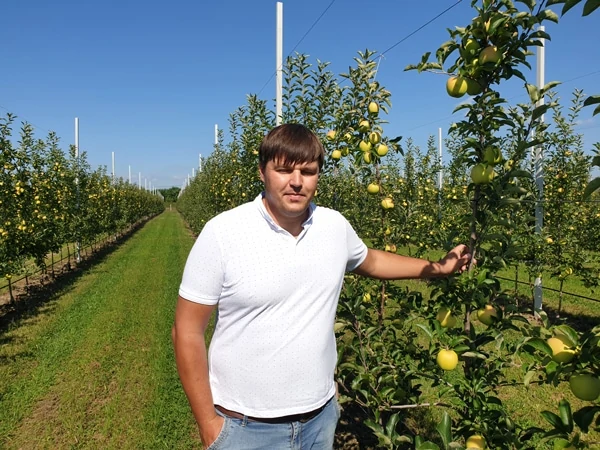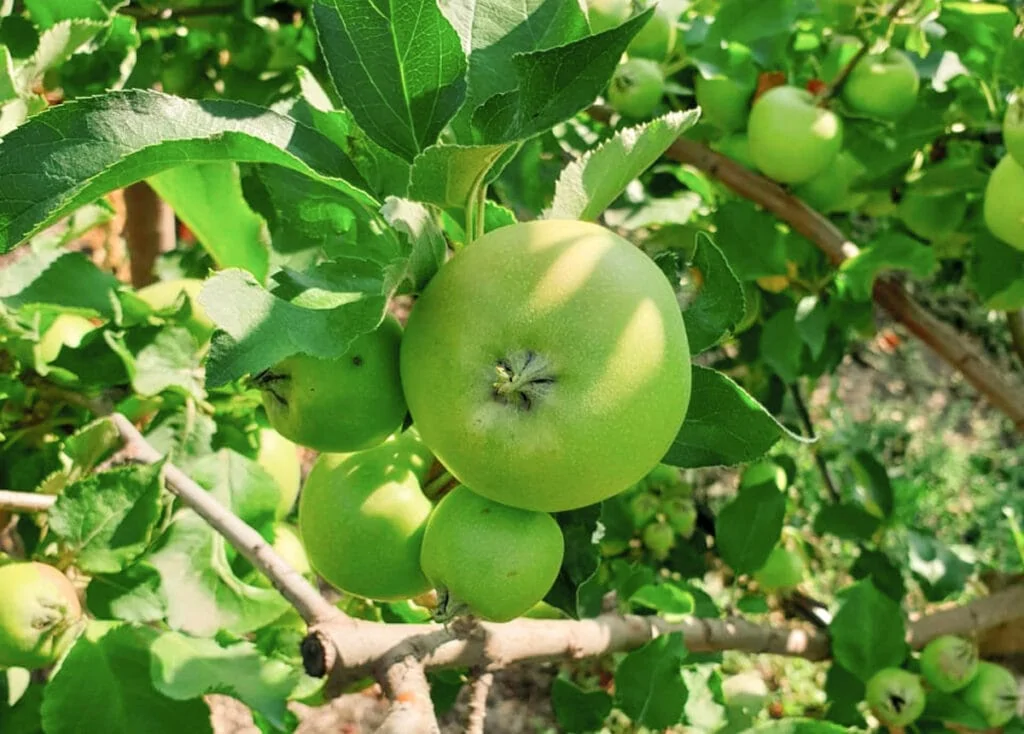Interview with Vasyl Bondarovskyi from EFT Group
Madex Twin is a biological insecticide based on Cydia pomonella granulovirus from Andermatt Biocontrol. Madex Twin controls Cydia pomonella and Grapholita molesta in fruit orchards. In this article Vasyl Bondarovskyi, head of plant protection at the EFT Group, shares with us insight into apple growing in Ukraine. Vasyl is interviewed by Alina Piven, area manager at Andermatt Biocontrol responsible for Ukraine. EFT Group is distributing Madex Twin in Ukraine for the first year, and Vasyl is reporting about his experience.
AP: Vasyl, Ukraine produces apples on more than 90.000 ha. Can you tell us more about apple production and the apple market in Ukraine? VB: The apple industry in Ukraine is in the phase of change and the introduction of new technologies is taking place. Today everything is known, but not everything is available – it concerns knowhow, growing technology, products. There are ongoing investments and the most of them are correct – considering apple growing not only as “gardening” but as a business and this is encouraging. However, there is lack of a stable retail market and insufficient crediting. But I also see opportunities in the development of cooperation between the growers and foundation of associations. Furthermore, we observe extreme fluctuations of the temperature and humidity because of climatic change, and at the same time growing plantation size and increasing cultivation intensity – all these changes bring new challenges for the apple growers.
AP: What are the most important changes needed for Ukrainian apples to become a world leading brand? VB: The brand is being developed by traders, especially our traditional variety Reinette Simirenko, but this specialty is not sufficient to become famous. The top quality is the most important parameter, and we still have a lot of homework to do to reach a world brand level. So far, approximately 30–50% of apple production are older varieties – Mutsu, Ligol, Florina, about 20–30% of Jonagold, Champion, Reinette Simirenko and 10–20% Golden and its clones, Fuji, and Gala. We produce 60–70% for the fresh market and up to 30–40% for processing, earlier it was 50% to 50%.


AP: How do Ukraine apple growers address the future challenges in plant protection, particularly also by using biological control? VB: Ukrainian growers look to Europe. They get access to advice by European consultants, during visits and excursions to EU countries, and of course they are still directed to technology by the leading chemical companies. Biological methods allow to essentially reduce the residue level and replace chemical pesticides at the critical plant growth stages, such as during the flowering or harvesting period. Personally, I am encouraged by the opportunity to improve existing growing technologies with biocontrol solutions that allow to obtain a high-quality and safe yield without losses and damages.
AP: How serious is the problem with the codling moth and oriental fruit moth in Ukraine? VB: We have big problems, especially in the south with the high pest pressure and high temperatures where both pests are present. Intensive cultivation and big orchards are typical, e.g. there are a lot of farms of 200–600 hectares. The damage level caused by codling moth and oriental fruit moth can reach up to 70%, in general 10% of damages are considered as normal. We constantly search for innovations against codling moth. Many growers use old products that are not effective because the pest populations have built resistances.
AP: Madex Twin is offering a biological control of these pest insects. What is your experience with the product in Ukraine? VB: I learned about baculovirus-based insecticides from the advisors and foreign literature a few years ago. I recognized that there is an advantage that it offers a different mode of action compared to the chemical pesticides, and therefore it is a resistance management tool. Although farmers often are concerned about new costs, many growers are interested in alternative solutions and want to try Madex Twin. The results as for the first year were essential.
In Dnepropetrovsk Oblast, we normally have 70–100 catches in a trap during the night, and sometimes even 150 catches. Therefore, the treatments were as follows: 2–3 applications per generation of 50 ml/ha in the tank mix with other traditional insecticides. The result is more than successful, the fruit damage level was below 1% instead of usual 10–18% in average. In other regions, such as Vinnitsa Oblast, where the pest pressure is lower and the flights are distinct, we sprayed Madex Twin 2 × 50 ml/ha 3–4 weeks before harvesting to reduce the residue level. No damages were observed.
AP: How do you evaluate the potential of Madex Twin in your country? VB: The farmers in Ukraine applied the product with great hopes that have now been fulfilled. The greatest advantage of Madex Twin application is the reduction of the pest population. Based on the success in the very first year, I see a great potential for Madex Twin in the Ukrainian market. We have not applied Madex Twin on pears yet – we plan to do it in the next season. The chances will be even better if the control of pesticides use and residue level becomes stricter. As long as dimethoate and chlorpyrifos are approved for fruit growing, the majority of growers will use them.